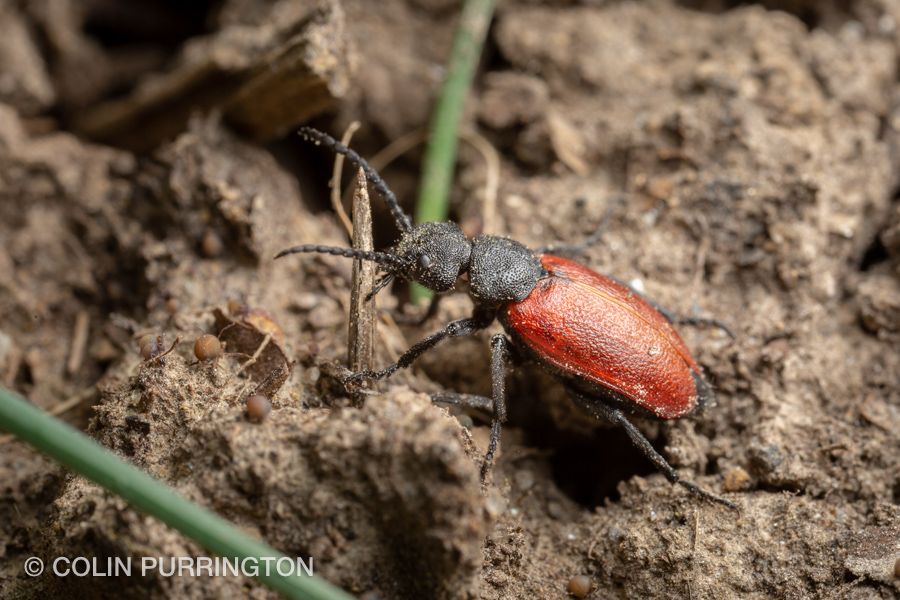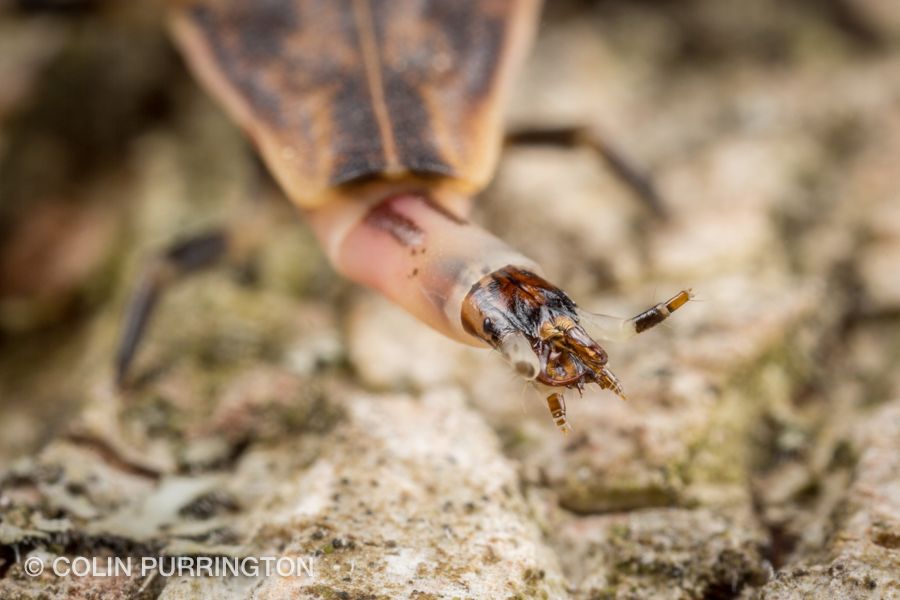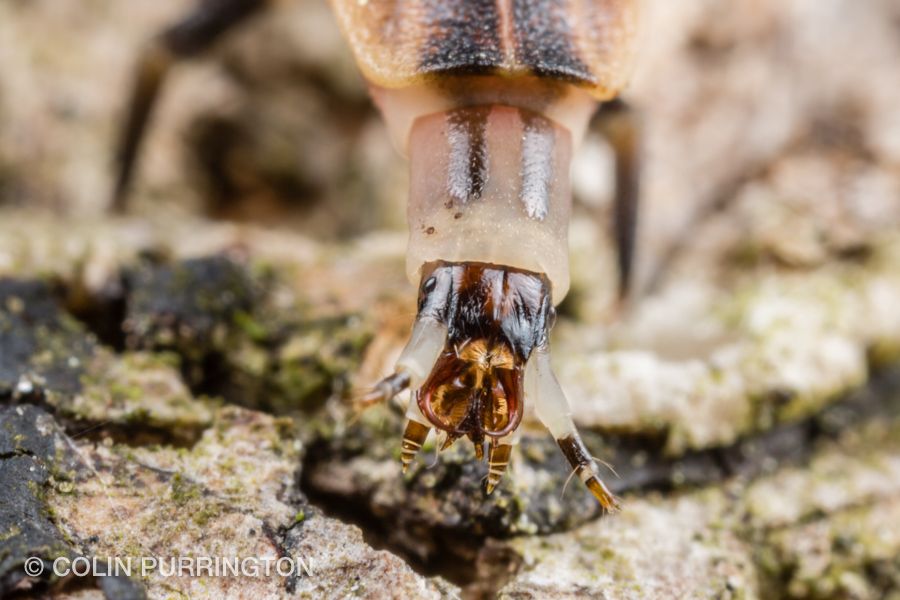Found this striking, highly punctate beetle in my yard a few days ago and finally figured out what it is: Tricrania sanguinipennis, a blister beetle (Meloidae). Apparently a parasitoid of Colletes spp., ground-nesting bees that are often situated in dense aggregations. I have hundreds of such bees in my front yard each year and I’m guessing they are unequal cellophane bees (C. inaequalis).

Per Parker and Böving 1924, female T. sanguinipennis deposit clumps of eggs near these aggregations and when larvae hatch they seek out adult bees and clamp onto body hairs with specialized mandibles. If the bee happens to be a female, larvae release their grip when she arrives at the brood cell, sometimes up to 2 1/2 feet underground. If the beetle larva has attached to a male bee it will move onto a female while the bees are mating. Once in the nesting chamber the larva will seek out the bee egg, eat it, then set up camp inside the cell (see fig 21, below) that holds the honey and pollen, which it will eat until maturity.
Below is Plate 3 from the Parker and Böving article. If you expand the image you can see that the bee has multiple larvae attached. I think I might need to capture a few of the bees this Spring to see whether I can find some of these hitchhikers. Am also trying to find the egg clumps, which can have thousands of eggs. That’s a lot of eggs for a beetle but the success rate of the larvae must be extremely small so they’ve presumably evolved large brood size to ensure that at least some find their way into a nest.
Very cool beetle and just had to share the find. If you’d like to see more photographs, there are currently 27 sightings Tricrania sanguinipennis on iNaturalist. I highly recommend the Parker and Böving article for the biology details but mainly for how they figured out the details; it’s hard to figure these things out when the species spends its life underground. For more information on related beetles this page by Dr E. F. Legner (UC Riverside) is excellent.




